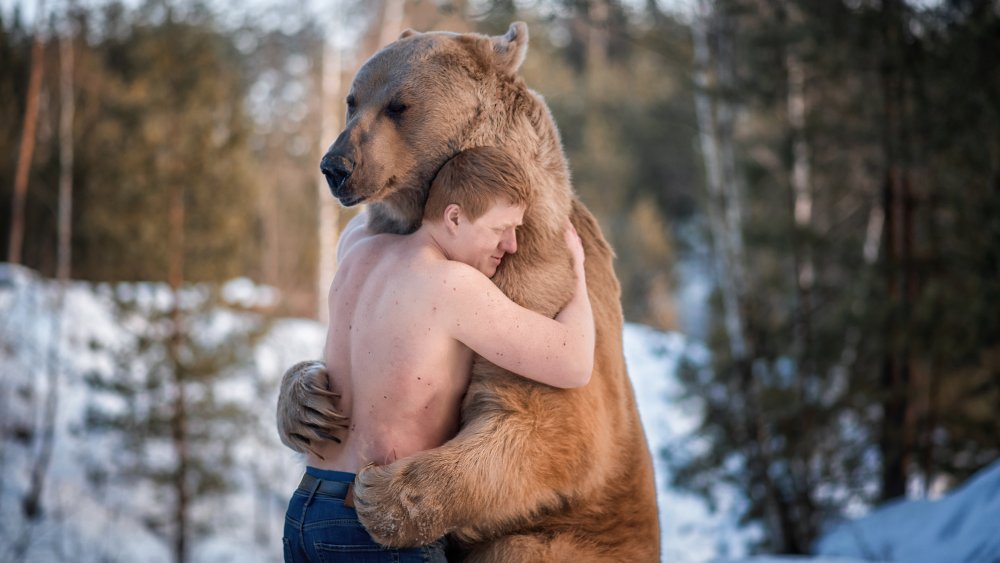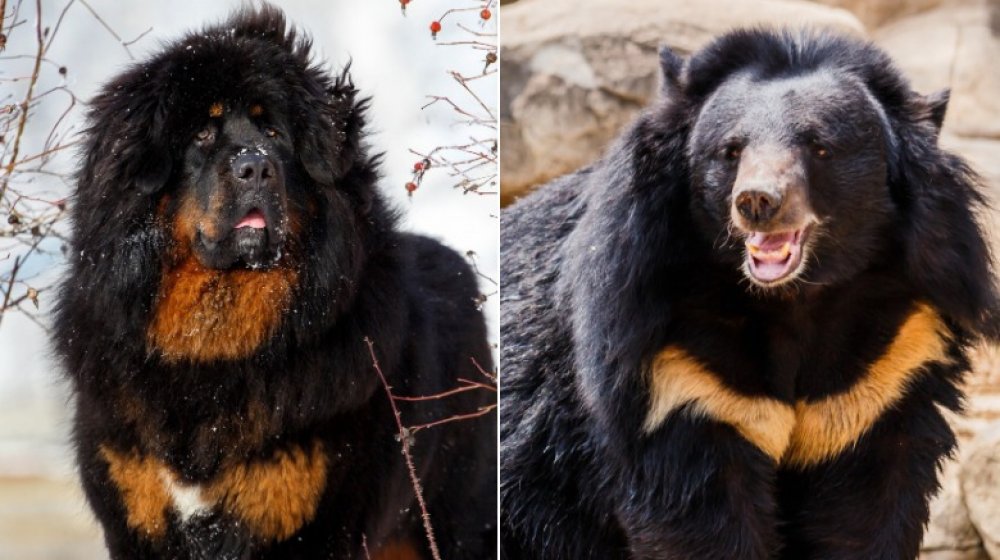The Dog Breed That Looks Most Like A Bear
While everybody knows that beauty is in the eye of the beholder, optical illusions prove that the species of some creatures also fits that bill. Oftentimes that bill belongs to a drawing of a duck's face but may be seen as a set of rabbit ears, depending on the perceiver and whether the season is more associated with a bunny or duck. But some real-life dogs buck perceptual expectations and appear to bark up the wrong family tree.
Some dogs pass for foxes and in 2013, a Puppy named Patch had an "uncanny resemblance to Hitler," according to War History Online. Presumably that makes Patch man's best friend and humanity's worst enemy. Some canines even resemble bear breeds to some people. That seems like a mistake your eyes shouldn't make. After all, one animal you throw a bone to, and the other picks your bones after turning your flesh into fresh kibble. But that's the beauty of eyes; they see what they want to see. But which dog breed makes your peepers want to see a bear?
The Tibetan mastiff is bear-ly recognizable
Besides having fur, four legs, and a longing for the taste of flesh that hopefully isn't yours, where would you see similarities between a bear and a dog? It's pretty subjective. For instance, one of the dogs listed by the folks over at Rover is the Chow-Chow, which For the Love of Dogster says looks like a lion and which we say looks like Cowardly Lion (Chow-ardly Lion?) from the Wizard of Oz. Both sites also list the Leonberger as resembling a bear or lion respectively. Then there's the question of which kind of bear.
Rover compares the snowy-coated Samoyed to a polar bear puppy. Meanwhile, For the Love of Dogster lists the Tibetan Mastiff as looking like a lion and Rover doesn't mention it at all, we actually think it bears a fairly strong resemblance to a specific kind of bear, specifically the Asiatic black bear. At least when you look at it from a certain angle with certain lighting and a certain fur color. That might sound like an awful lot of prerequisites, but our eyes are just more demanding. This is important stuff, after all.
The International Association for Bear Research and Management describes the Asiatic black bear as boasting a "light-ish muzzle" and a striking, sometimes V-shaped white patch on its chest. Now look at the above side-by-side of the bear and a Tibetan mastiff. Like looking at a funhouse mirror image, right?

